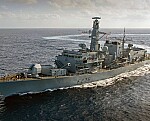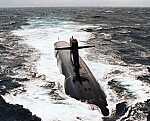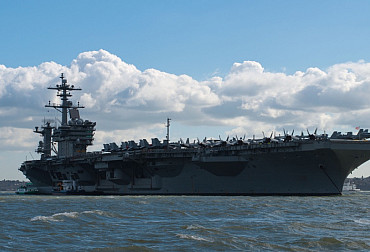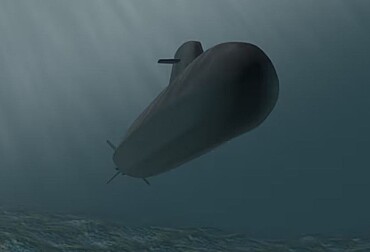Betting on large vessels as the Achilles heel of the U.S. Navy
The U.S. Navy has historically been shaped by a combination of geopolitical ambitions, technological advances and ideological rivalry, particularly during the Cold War. From World War II to the end of the 20th century, aircraft carriers were a symbol of American power and the backbone of Carrier Strike Groups (CSGs) – complex naval formations capable of deployment anywhere in the world. At that time, the American fleet was characterised by a large number of ships of various types (destroyers, cruisers, frigates, diesel-electric and nuclear submarines, landing ships and other auxiliary units).
In the period after 1991, with the collapse of the bipolar world, there was a fundamental revision of maritime priorities. While earlier naval doctrine assumed large-scale conflicts between equal powers, the post-Cold War period brought a focus on expeditionary operations, counterinsurgency missions, and power projection in troubled regions (e.g., the Middle East, Asia, Africa). This shift led to the decommissioning of conventional submarines and Oliver Hazard Perry-class frigates without direct replacement, which, from today's perspective, proved to be an unfortunate decision. Since the turn of the millennium, the US Navy has focused on technologically advanced but extremely expensive vessels such as the Arleigh Burke-class destroyers (DDG) and the infamous Zumwalt, the Ticonderoga-class cruisers (CG), and, in particular, the Nimitz- and Ford-class nuclear-powered aircraft carriers (CVN). An attempt to create a cheaper and modular platform in the form of the Littoral Combat Ship (LCS) failed, both due to technical problems and unclear conceptual anchoring.
The conceptual evolution led to the concentration of budgetary resources on a smaller number of highly sophisticated but financially costly vessels, resulting in a significant reduction in vessel density and an increase in the average concentration of weapons per vessel. The sinking, decommissioning or any significant damage to a single ship could thus deprive the entire fleet of a considerable number of its ‘main’ assets in the event of a potential conflict. A fleet designed in this way is less prepared for asymmetric conflict and faces logistical overload. From a strategic point of view, the US Navy is now addressing the question of whether the ‘global dominance’ fleet reflects the reality of the 21st century battlefield and whether it is not a structural relic from a time when adversaries were unable to asymmetrically threaten its technological dominance.
Current composition of the fleet and maritime doctrine of the U.S. Navy
The current composition of the US Navy reflects a strategy of global power projection based primarily on the presence of Carrier Strike Groups (CSG) and Expeditionary Strike Groups (ESG). These formations are based on large surface vessels, whose development, construction and maintenance are highly demanding in terms of both finances and personnel.
In 2025, the core of the U.S. Navy will consist of the following ships:
- 11 Nimitz-class nuclear-powered aircraft carriers (CVN) and the new Ford-class carriers
- 10 amphibious assault ships (LHD/LHA)
- 75 destroyers (DDG), almost exclusively of the Arleigh Burke class
- 9 cruisers (CG)
- 71 nuclear submarines (SSBN, SSN, SSGN)
- 25 smaller LCS units (their strategic future is uncertain)
It is important to note the regional imbalance: while most of the force is allocated to supporting the Indo-Pacific presence, pressure is growing on current naval capabilities in European waters (in response to Russian threats) and in the Persian Gulf (to protect trade routes). It is precisely the lack of smaller, operationally inexpensive and rapidly deployable units that limits flexibility in these environments. While the current structure of the US fleet allows for effective deterrence of an equal adversary, it is not optimised for long-term economic operation or for combating asymmetric or more extensive regional threats.
Current modernisation projects of the US Navy include 20 Constellation-class frigates, 10 Gerald R. Ford-class aircraft carriers (one in service) and up to 25 additional Arleigh Burke-class destroyers, which are to be replaced by the DDG(X) class in the future. The U.S. Navy also plans to expand its fleet with 12 America-class multipurpose helicopter assault ships (two of which are already in service).
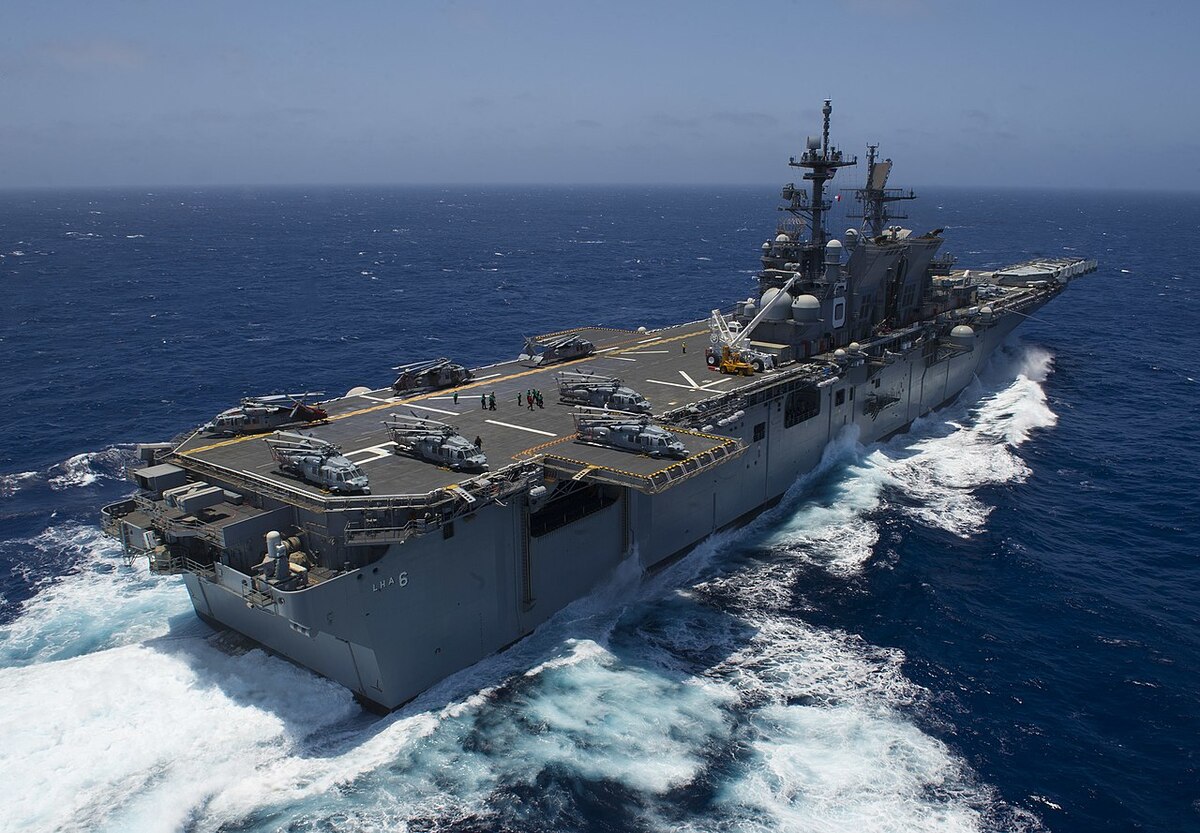
The Chinese model: building a comprehensive fleet of all classes of vessels
In contrast to the American emphasis on large vessels, the Chinese navy has, since the beginning of the 21st century, systematically focused on building a fleet that covers the entire spectrum of vessels – from small missile boats to aircraft carriers and nuclear submarines. By 2020, China had already surpassed the US Navy in terms of the number of combat vessels capable of being deployed in conflict, and by 2030, the Chinese fleet is expected to reach 435 units, almost half as many as the US. China thus has clear ambitions to replace the US as the dominant power in the world's oceans. The Middle Kingdom's approach is to combine quantity with gradual qualitative modernisation in order to have more vessels of comparable quality (with the same combat value). Type 056 corvettes were produced at a ‘de facto’ serial pace, and 72 units have been launched to date. At the same time, the frigate fleet has been expanded thanks to the Type 054/A/B class (2/40/2 units), which forms the backbone of medium-tonnage vessels. The larger combat vessels include the Type 052D destroyers (29 units) and the Type 055 heavy destroyers/unofficial cruisers (8 units). The People's Republic of China's naval forces also have 17 older-type destroyers, giving it a total of 44 destroyers (including the Type 055) and 54 frigates (including the older Type 053 H1G/H3).
The Chinese industry's ability to build warships on a massive scale is unprecedented – major state-owned shipyards such as Jiangnan Shipyard have production capacity that exceeds that of all major US shipyards combined. This advantage also stems from the integration of military and commercial production, which allows for rapid reallocation of capacity according to strategic priorities. China is also striving to achieve strategic independence in the field of nuclear propulsion. An example is the development of the 004 aircraft carrier, which aims to enable China to deploy continuously without the need for frequent refuelling, thereby matching the capabilities of its American counterparts.
Noteworthy are the continuing problems in the field of nuclear submarines – for example, the accident of one of them (Type 093) in 2023 showed that China still faces serious technological challenges in the design of underwater nuclear vessels. The majority of China's submarine fleet consists of conventional submarines (68 units). Overall, however, China's approach is very effective thanks to industrial efficiency, quantitative superiority and the ability to quickly adapt its fleet to different types of conflict.
While the US relies on a smaller number of highly advanced and expensive ships, China is expanding its fleet in all categories, increasing its flexibility and ability to operate in multiple types of conflicts. The decisive advantage may therefore be the ability to simultaneously deploy a variety of force tools, especially in areas such as the South China Sea, where a large number of small and medium-sized vessels can play a key role in asymmetric conflicts with smaller actors or in military blitz campaigns against the US and its allies. It is precisely the American allies that will be key to counterbalancing Chinese naval power in the Pacific. The first strong indication of such strategies is the creation of the AUKUS pact (US-UK-Australia), and it is quite likely that Japan and South Korea will also become members of this or another newly created pact in the future.



